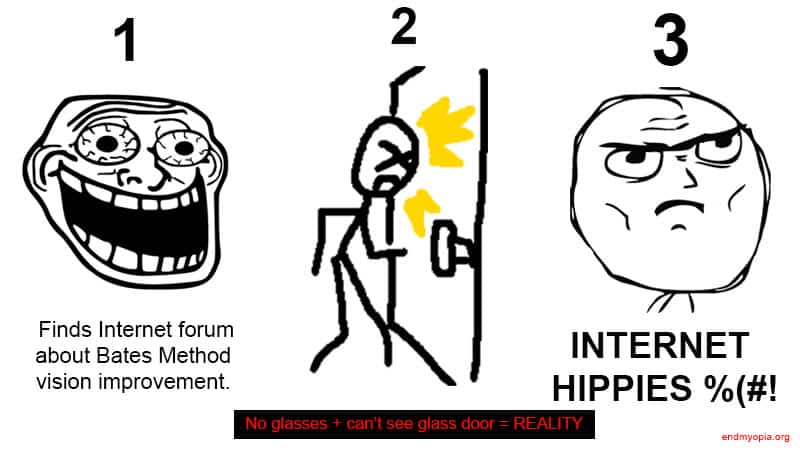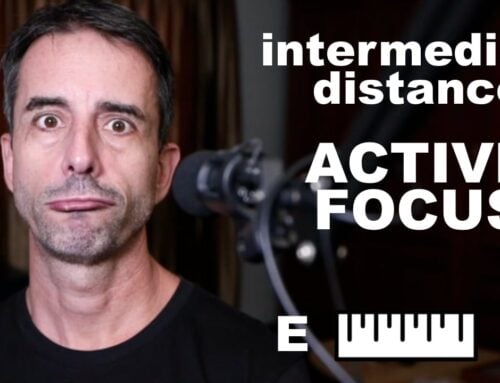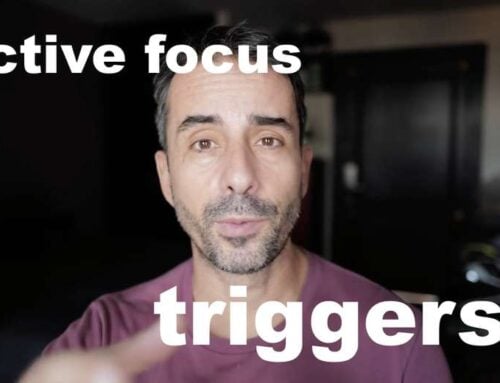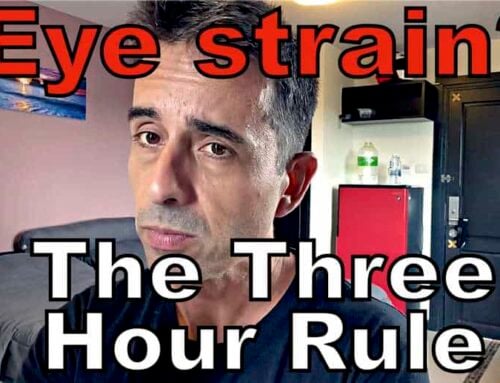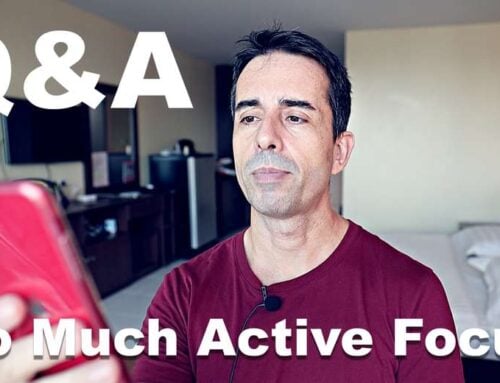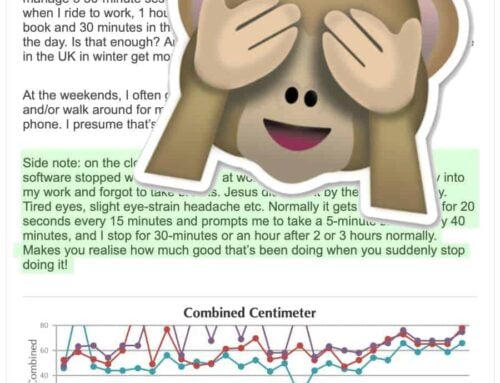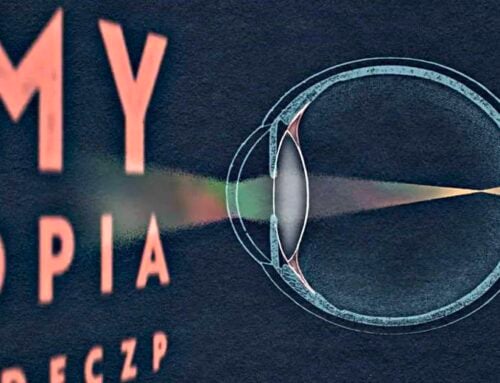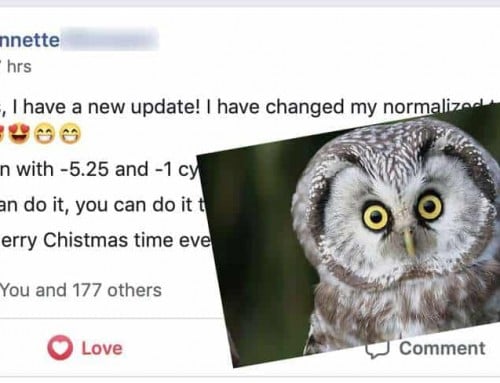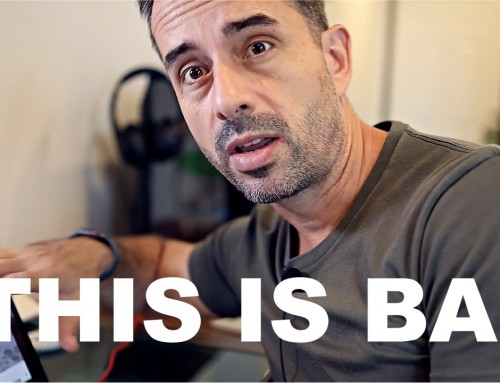It’s fully off-topic Sunday.
Maybe that’ll mean two posts today. I don’t want to misplace this particular topic though, so let’s catch it while I’m still thinking of it.
On-topic and all.
Low myopia, what to do if you never worse glasses, and also a bit of active focus talk:
Hi Jake,
As I’ve written in a former post, I’ve never worn glasses. I’m aprox. -2.5D in both eyes.
Anyways, here are some of my concerns/speculations:1) As there hasn’t yet been any session about a reduced prescription for long distances, I’m not sure whether or not the best thing for me to do, is what I’ve always been doing (not wearing any glasses), or order a pair of RP?
2) I’m not entirely sure I’m doing the active focus right. Right now, I just try to move as far back as I can, slowly inching my way back whilst still being able to read the text from my pc, trying to clear up the image.Is this the right approach?
3) How often should you do active focus? For instance, is it bad to do x amount of time per day?
(rp = reduced prescriptions)
Incidentally, for those who ask why I don’t just write a book, this is (also) why.
My method is a bit of an interactive process. Timing matters, and then there are always questions. Success rates dropped notably for me, anytime I tried to do this via some written and hands-off guide.
Here’s the deal on the no-glasses, and active focus:
Active focus: You are looking for a change in clarity (blur > clearer) that happens at any static distance (ie. created by your eyes, not by a change in distance)
Whenever your eyes are doing the job of clearing up blur, you are getting a moment of the right kind of stimulus. If there was no close-up strain at all, this would be basically the one and only needed key for improvement. Always a little nudge, saying “hey I need more clarity”, and the eyes being able to deliver (which only works when the clear image isn’t far away in terms of relative distance change).
You might do some active focus whenever you think of it. Start out the computer time with that to re-assess what distance you should find yourself at for most of the time. Push that distance, and then try to stay more or less around there. Whenever you think of it or want to, push that a bit throughout the day.
As habits go, I had come to basically just blink and challenge myself for focus anytime I’d see a sign outside.
There’s no bad way of doing it. The best way is prioritizing the habit building over trying to hit a specific number or making it an “exercise”. For me it’s almost Pavlovian. See a sign, it looks blurred, I try to clear it up.
Glasses or no glasses: The only point of glasses is to create (or move) that blur horizon to a distance that is useful. For everyone here, we’re basically just looking to make that adjustment. How far do you want to see for computer use? So we figure out a prescription that gives us that amount of distance.
It will come up in the sessions, the normalized (distance) prescription. Here too the question is merely, whether you’d like to see more far, clearly, or not. There’s no downside to the glasses if used exactly and correctly in that fashion.
Habits, habits, habits.
The moment anybody says “eye exercises”, you might as well tune out.
Exercises sell a ton of home gym stair climbers and shake weights and all the things you see at every single yard sale. Exercises sell books on vision improvement. Exercises work great for whoever sells them. For the buyer, not so much.
The only thing that works long term, is process based on habit.
That and the more you do the active focus bit outside, for distance vision, the more effective it’ll work as stimulus driver. Remember, your eyes aren’t broken. Strained, maybe. Wrong stimulus from those giant overprescription for the optometrist, quite possibly. But not broken. Give them good stimulus via active focus and often outside, and things go back towards healthy distance vision.
Cheers,
-Jake

